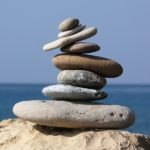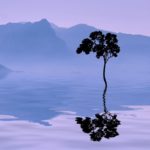Homemade Glacier Goo is a polymer that flows slowly but cracks under high stress.
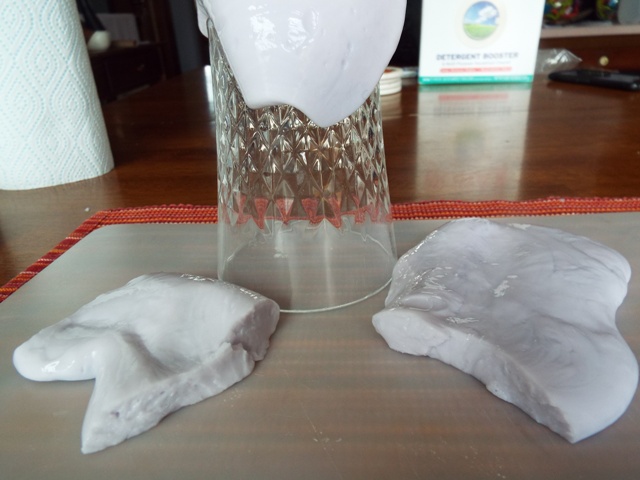
WBLT Students: Glacier Goo will be used for upcoming Glaciology labs in the post the Movement of Glaciers.
Lab supplies needed:
- 1/2 cup warm water
- 2 tsp Borax powder
- 1 qt plastic zip lock bag
- Food coloring (optional)
- Medium size bowl
- warm water (You will be measuring with the empty glue container.)
- 4 oz bottle of school glue
- coffee cup (or small bowl)
- 2 spoons
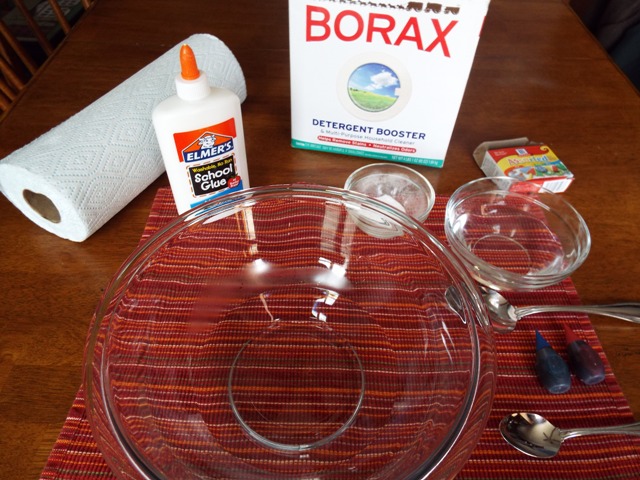
Glacier Goo lab instructions:
Medium bowl: In a medium bowl, add 4 oz bottle of school glue, fill the empty glue container with water, shake and add to the bowl. Next, add 8 drops of your favorite food color, or until you reach your desired color. Use less food coloring if you want a pastel color. Stir and mix well.
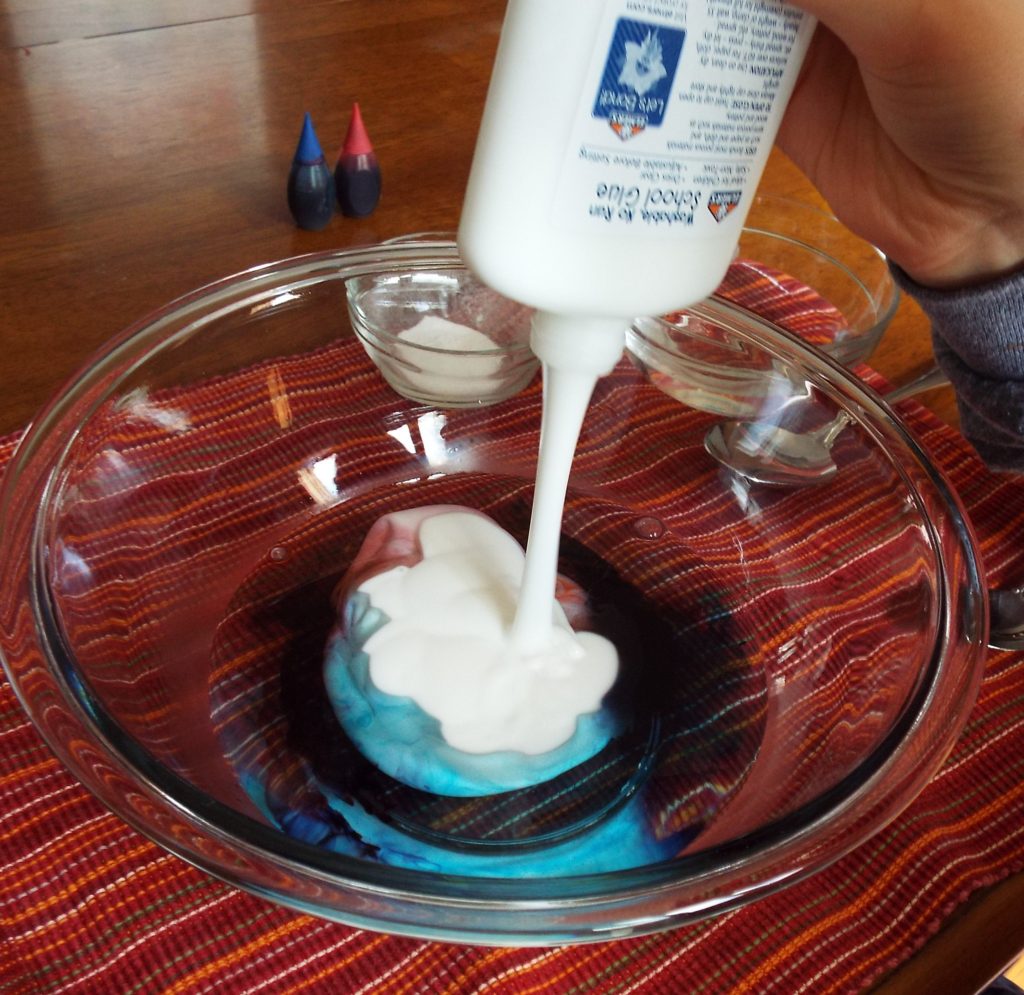
Small Bowl: In the small bowl, add 2 tsp of Borax powder to 1/2 cup warm water. Stir until the Borax is dissolved.
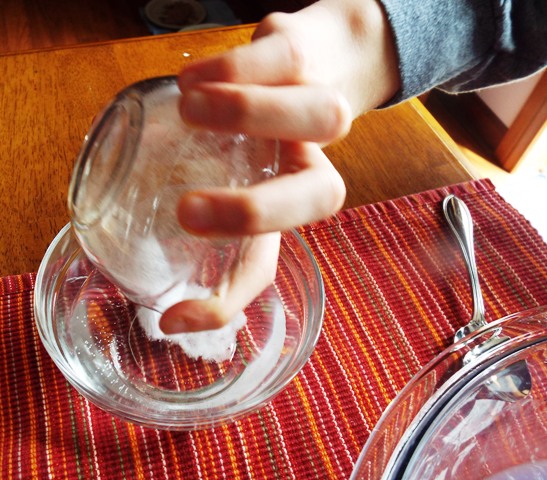
Combine the small bowl’s ingredients into the medium size bowl and mix all ingredient together. You will begin to see long strands of spaghetti-looking-goo start to form.
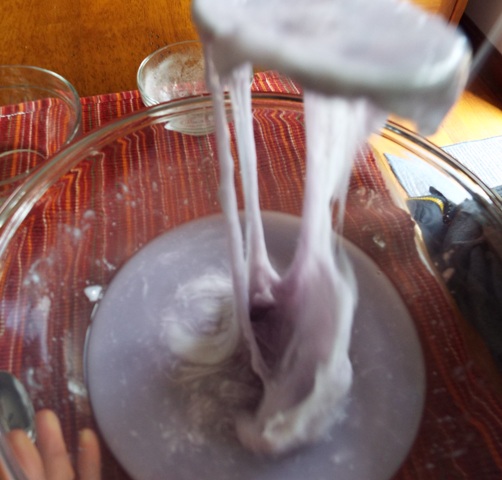
These strands, formed by Borax molecules chaining with the glue molecules, are called polymers. Stir until the strands become one lump and most of the water has disappeared.
Knead the glacier goo for several minutes until most of the water is incorporated and you are ready to play!
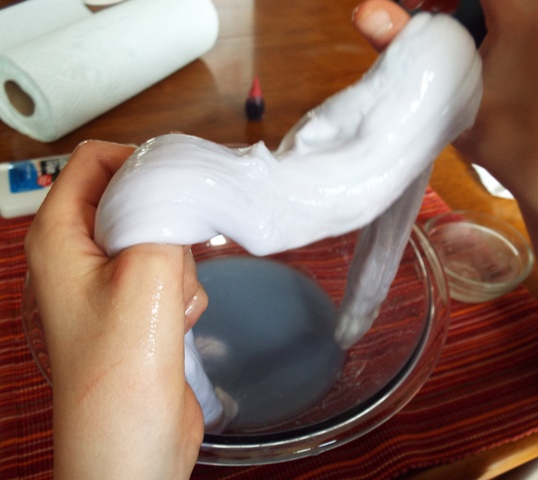
Store the glacier goo in a zip-lock baggie or airtight container.
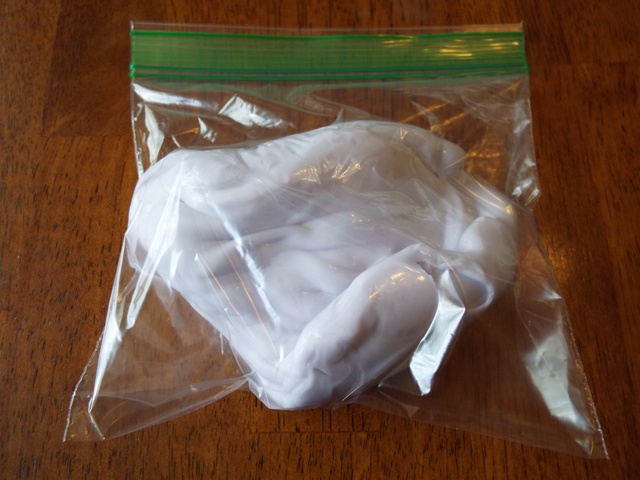
was a hit at our Atomic Birthday Party.
The ‘why’ behind the lab.
When Borax is added to the glue, a chemical change happens to the molecules and you will begin to see long spaghetti-like strands start to form. Suddenly, the goo will seem stringy. These long chains of molecules are called polymers. They look something like this.
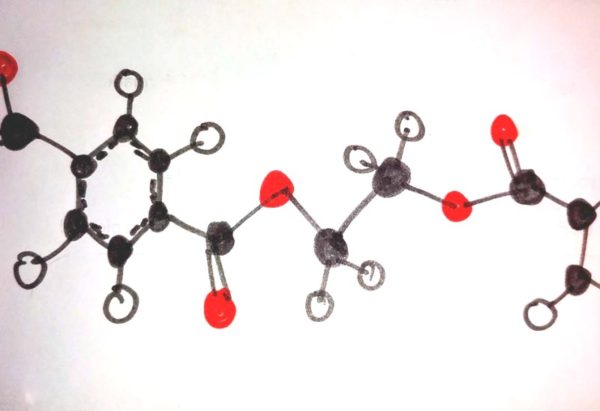
One way to picture polymer chains is to think about cooked spaghetti. When it is cooked, it will slide out of the hot pot and into a bowl. It flows like a liquid because the strands are slippery. Chains of molecules, or polymers, are equivalent to the long strands of spaghetti.
Vocabulary
- Molecules: A group of atoms bonded together.
- Bond: Holds atoms together. (for small children: a bond is similar to holding hands)
- Polymers: A long chain of molecules.
- Knead: Squeeze and roll a substance (like goo)
Glacier Goo was a hit at Andrew’s Atomic Birthday Party.
*Reminder* This is a safe site for children. If not tastefully stated, your comment will disappear in a “POOF”!
